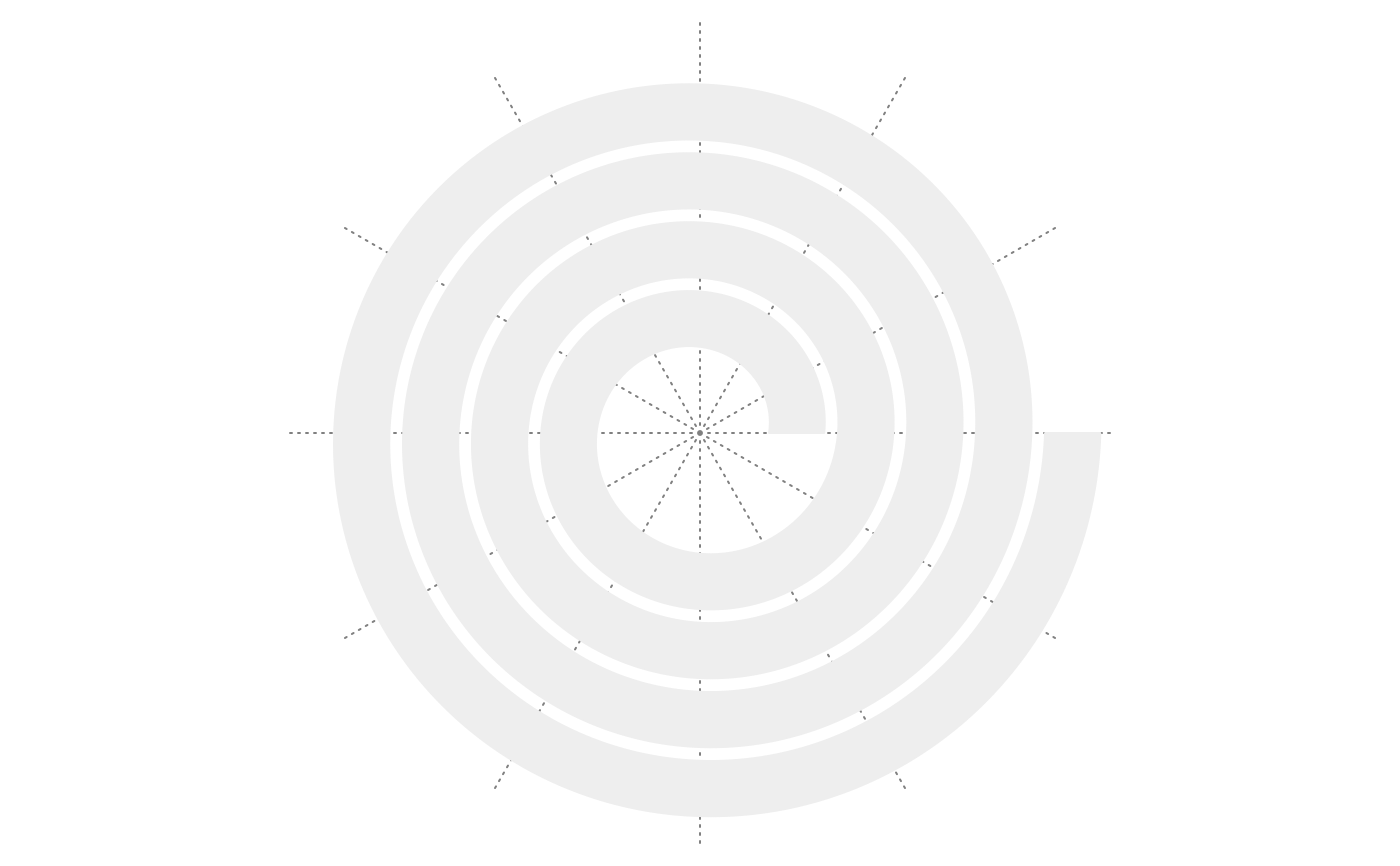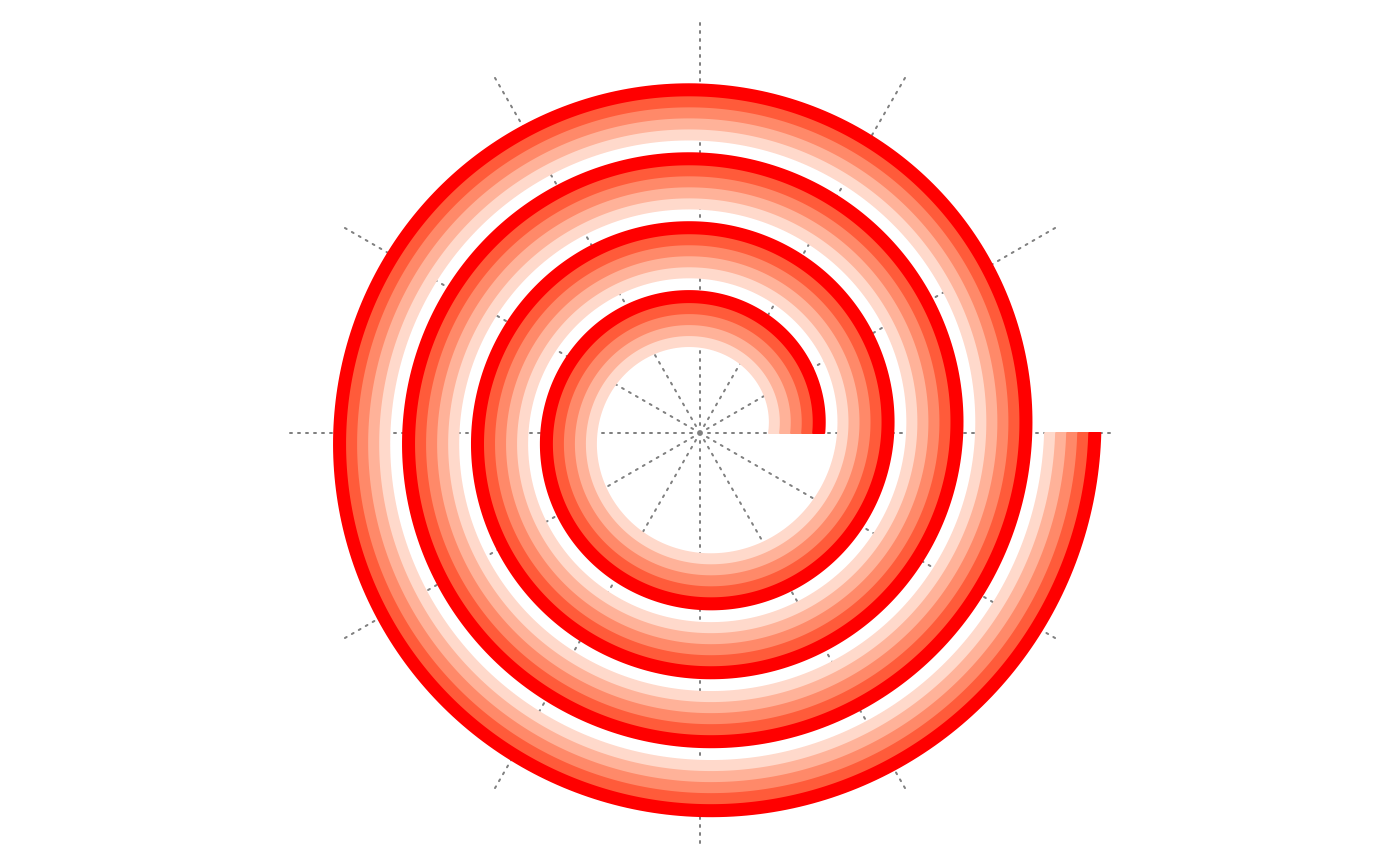Add a new track or move to an existed track
spiral_track(
ylim = c(0, 1),
height = 0.8,
background = TRUE,
background_gp = gpar(fill = "#EEEEEE"),
reverse_y = FALSE,
gradient = FALSE,
track_index = current_track_index() + 1
)Arguments
- ylim
Data range of the y-locations.
- height
Height of the track. The value can be the fraction of the distance of the two neighbour spiral loops. The value can also be a
grid::unit()object.- background
Whether to draw the background of the track, i.e. border and filled color of background.
- background_gp
Graphical parameters of the background.
- reverse_y
Whether reverse the direction of y-axis (i.e. pointing to the center of the spiral)?
- gradient
Whether draw the background in gradient? The value can be a positive integer of the number of gradients from
background_gp$fillto white.- track_index
Index of the track.
Value
No value is returned.
Details
If the track is already existed, the function simply mark the track as the current track and does nothing else.
Examples
spiral_initialize()
spiral_track(height = 0.8)
 spiral_initialize()
spiral_track(height = 0.4, background_gp = gpar(fill = "red"))
spiral_track(height = 0.2, background_gp = gpar(fill = "green"))
spiral_track(height = 0.1, background_gp = gpar(fill = "blue"))
spiral_initialize()
spiral_track(height = 0.4, background_gp = gpar(fill = "red"))
spiral_track(height = 0.2, background_gp = gpar(fill = "green"))
spiral_track(height = 0.1, background_gp = gpar(fill = "blue"))
 spiral_initialize()
spiral_track(height = 0.8, gradient = TRUE) # by default 10 gradients
spiral_initialize()
spiral_track(height = 0.8, gradient = TRUE) # by default 10 gradients
 spiral_initialize()
spiral_track(height = 0.8, background_gp = gpar(fill = "red"), gradient = 5)
spiral_initialize()
spiral_track(height = 0.8, background_gp = gpar(fill = "red"), gradient = 5)
